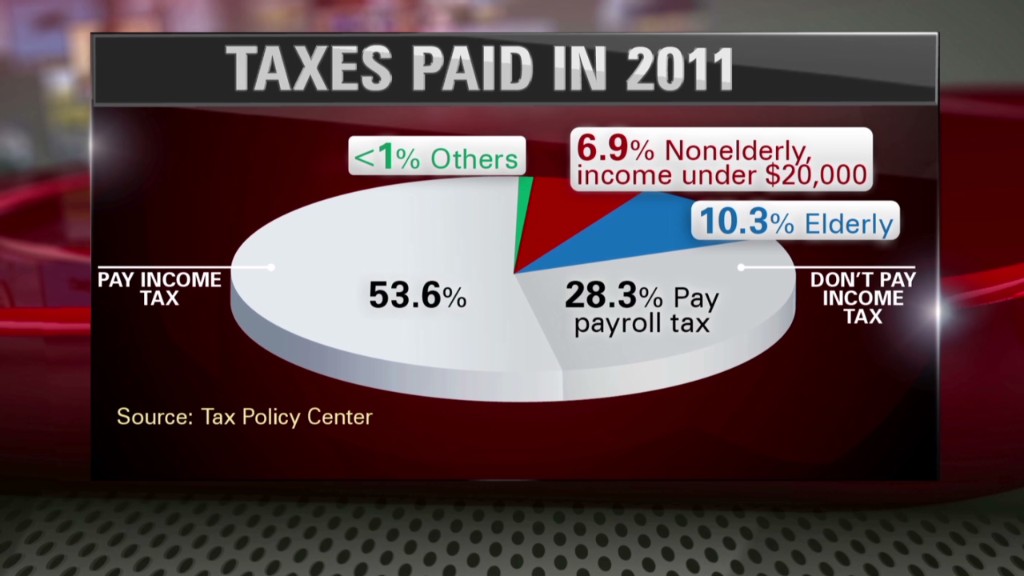
Nobody's really talking about this slice of the pie, but Mitt Romney's "47%" who pay no federal income tax include several thousand of the highest-income households in the country.
The Tax Policy Center estimates that 4,000 households with incomes over $1 million ended up with zero federal income tax liability in 2011. Another 14,000 made between $500,000 and $1 million.
Combined, those households represented just 0.025% of the more than 76 million who did not pay.
But their presence in the No Tax Club underlines the fact that the tax code is chock full of tax breaks and exceptions benefiting people up and down the income scale.
There are various reasons why a household booking more than $1 million in income could owe nothing in federal income tax, experts note.
Related: 6 of the richest owed no income tax in 2009
Among them, people who live off their investment income and report large investment losses in a given year may be able to offset the taxes owed on their investment gains.
Or they may have gotten a lot of their income from tax-free investments, such as municipal bonds.
Another possibility: a wealthy tax filer may report a lot of dividend income from foreign stocks on which he already paid tax to a foreign government. He would get a foreign tax credit on his U.S. return, to avoid double taxation. And if his foreign tax bill tops his U.S. tax bill, he wouldn't owe anything to the IRS on that dividend income.
Add in some charitable contributions and other tax breaks to any of these scenarios, and a tax filer could whittle down his federal income tax bill to zip.
It's impossible to say how many households -- rich and otherwise -- would end up with zero federal income tax liability under Romney's tax reform proposals. There are still too many unknowns -- such as which tax breaks he'd be willing to curb to pay for his proposed tax rate reductions.
But it's a fair bet there will still be a notable number. The percent of non-payers fluctuates from year to year, but there has not been one year since 1916 in which there were no non-payers, according to the Tax Foundation.
Among the returns filed -- which excludes people who didn't have to file because their income was too low -- non-payers have ranged from a low of 7.5% in 1943 to a high of 56.1% in 1934. Since 2000, the group of non-payers has grown to more than 40% from 25%.

